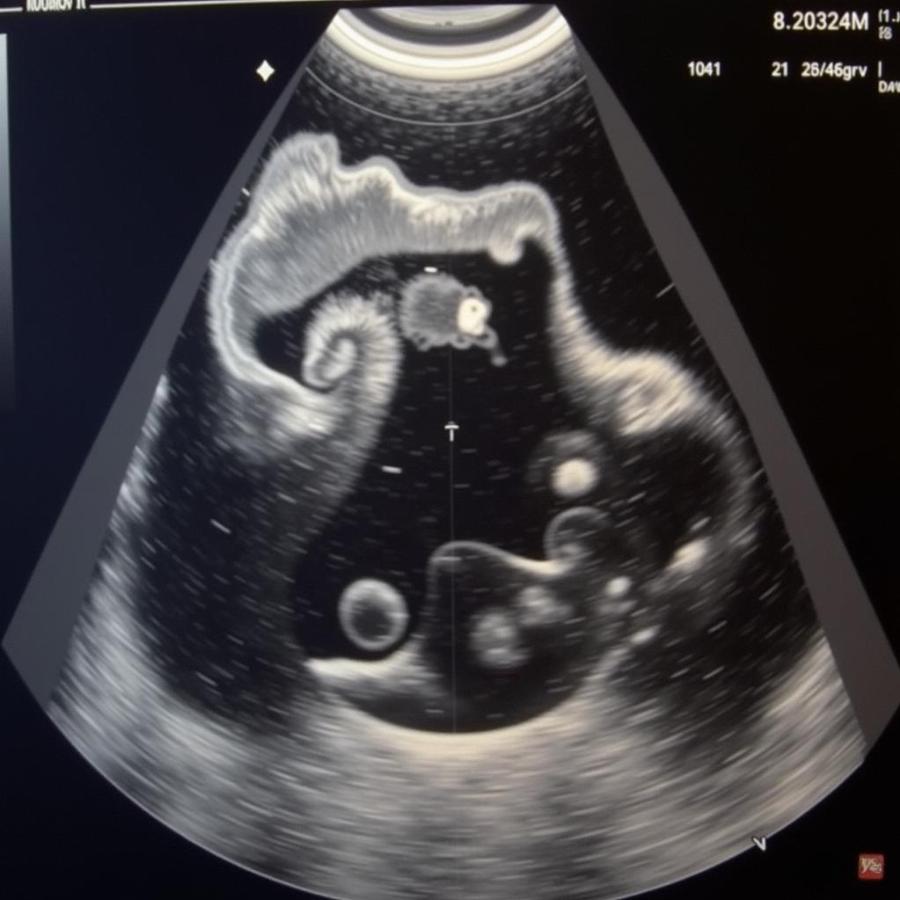Gallstones in dogs, also known as choleliths, are a relatively uncommon but serious health issue. They form in the gallbladder, a small organ that stores bile, a fluid crucial for digestion. These stones can cause a range of problems, from mild discomfort to life-threatening blockages. Understanding the causes, symptoms, and treatment options for gallstones is vital for any dog owner.
What Causes Gallstones in Dogs?
Several factors can contribute to gallstone formation. Breed predisposition plays a role, with certain breeds like Miniature Schnauzers, Shetland Sheepdogs, and Cocker Spaniels being more susceptible. Other contributing factors include obesity, diabetes mellitus, and hyperlipidemia (high cholesterol). Infections, inflammation of the gallbladder (cholecystitis), and changes in bile composition also increase the risk. Understanding these risk factors can help owners take preventative measures.
Recognizing the Symptoms of Gallstones in Dogs
Unfortunately, the symptoms of gallstones in dogs can be vague and often mimic other conditions. This can make diagnosis challenging. Some common signs include vomiting, lethargy, jaundice (yellowing of the skin and gums), abdominal pain, decreased appetite, and weight loss. More severe cases can lead to fever, dehydration, and even sepsis. If you notice any of these symptoms in your dog, it’s crucial to consult a veterinarian immediately.
Diagnosing Gallstones: What to Expect at the Vet
Diagnosing gallstones requires a combination of diagnostic tests. Your veterinarian will likely perform a physical exam and blood tests to evaluate liver and gallbladder function. Imaging techniques like ultrasound are essential for visualizing the gallbladder and identifying the presence of stones. In some cases, more advanced imaging like CT scans or MRI may be necessary. Accurate diagnosis is crucial for determining the appropriate treatment plan.
 Veterinary Ultrasound Diagnosing Canine Gallstones
Veterinary Ultrasound Diagnosing Canine Gallstones
Treatment Options for Gallstones in Dogs
Treatment for gallstones varies depending on the severity of the case. In some instances, dietary changes and medications may be sufficient to manage the condition. These medications can help dissolve the stones or manage the symptoms. For more severe cases, surgical removal of the gallbladder (cholecystectomy) is often the recommended course of action. This procedure is generally safe and effective, and most dogs recover well. Similar to gallbladder disease in dogs, gallstones require prompt and appropriate veterinary care.
What Can I Do to Prevent Gallstones in My Dog?
While not all cases of gallstones are preventable, certain lifestyle modifications can help reduce the risk. Maintaining a healthy weight for your dog is crucial. Feeding a balanced diet that is low in fat and cholesterol can also be beneficial. Regular exercise and routine veterinary checkups can help identify potential problems early on. Early diagnosis and intervention are key to managing gallstones effectively. Just as with preventing cholangiohepatitis in dogs, a healthy diet is paramount.
What Does Yellow Dog Poop Mean?
Sometimes, yellow dog poop can be an indication of gallbladder issues. Bile gives stool its typical brown color. If bile flow is obstructed by gallstones, the stool can appear pale, yellow, or even gray. It’s important to note that yellow poop can also be caused by other factors, so it’s important to consult a vet to determine the underlying cause. This is also similar to instances where elevated alkaline phosphatase in dogs might be observed, requiring professional diagnosis. Furthermore, knowing what to feed a dog with gallbladder problems can be essential in managing this condition.
Conclusion
Gallstones in dogs are a serious health concern that requires prompt veterinary attention. Early diagnosis and appropriate treatment are essential for a positive outcome. By understanding the causes, symptoms, and preventative measures, owners can play a vital role in protecting their canine companions from this potentially debilitating condition.
FAQ
Q: Can dogs live without a gallbladder?
A: Yes, dogs can live a normal life after gallbladder removal.
Q: Are certain dog breeds more prone to gallstones?
A: Yes, breeds like Miniature Schnauzers and Shetland Sheepdogs are more susceptible.
Q: What is the typical recovery time after gallbladder surgery?
A: Most dogs recover within a few weeks after surgery.
Q: What should I feed my dog if they have gallstones?
A: Consult your veterinarian for dietary recommendations specific to your dog’s needs.
Q: Are there any natural remedies for gallstones in dogs?
A: While some natural remedies are suggested, always consult your veterinarian before trying any at-home treatments.
Q: How can I tell if my dog is experiencing abdominal pain?
A: Signs of abdominal pain include hunching, whining, restlessness, and guarding the abdomen.
Q: What are the long-term implications of gallstones if left untreated?
A: Untreated gallstones can lead to serious complications, including gallbladder rupture and liver damage.
Dr. Emily Carter, DVM, a board-certified veterinary internal medicine specialist, states, “Early detection of gallstones is crucial. Regular checkups and prompt attention to any unusual symptoms can significantly improve a dog’s prognosis.”
Dr. Andrew Miller, DVM, a veterinary surgeon with over 20 years of experience, adds, “While surgery can be necessary, many dogs live long and healthy lives after gallbladder removal. Dietary management plays a key role in their long-term well-being.”
Beaut Dogs is your trusted source for comprehensive and expert-driven information on all aspects of dog ownership, from breed selection to health care. Beaut Dogs empowers you to provide the best possible care for your canine companion. When in doubt, reach out to us! Email: [email protected] for detailed and accurate answers from the experts at Beaut Dogs.